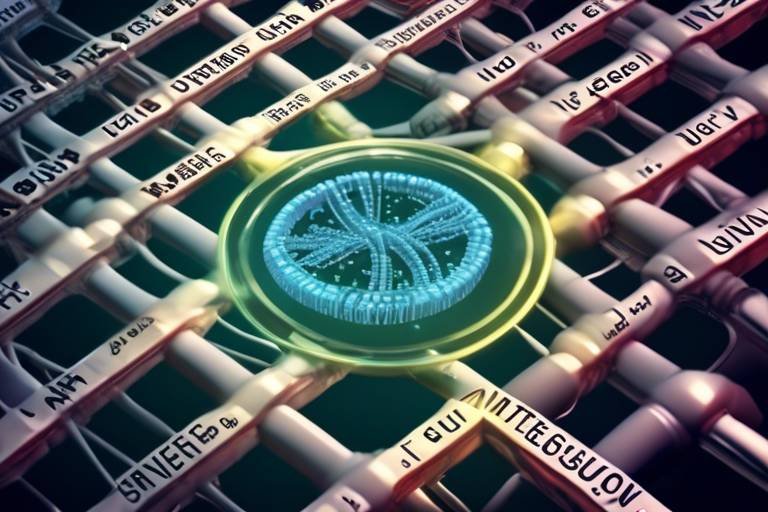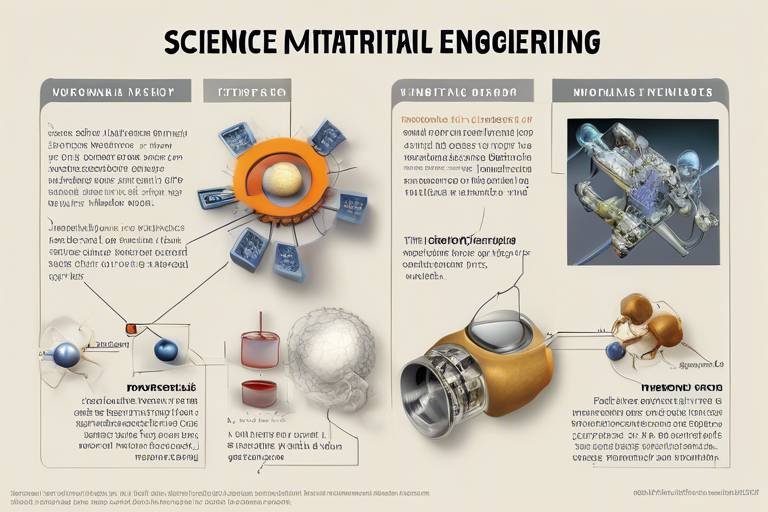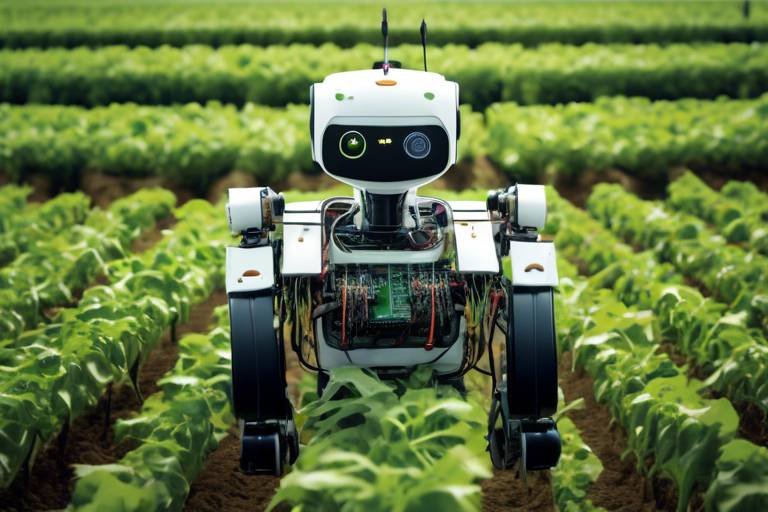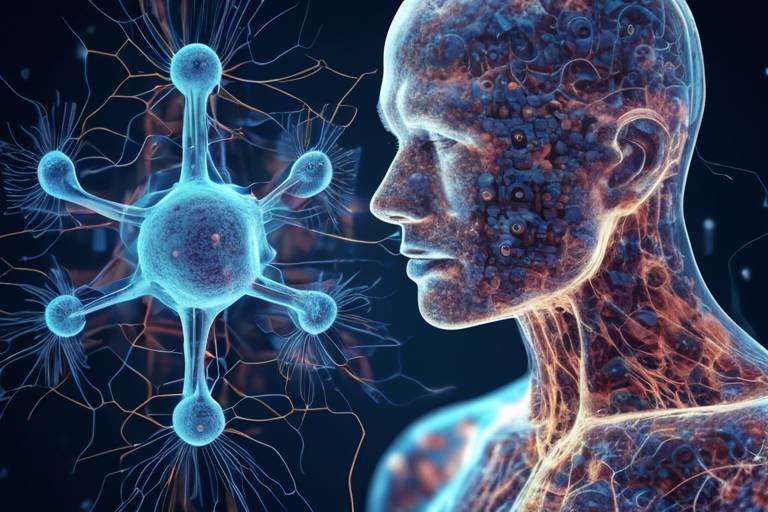The Intersection of Genetics and Technology
Welcome to the fascinating world where genetics meets technology. This intersection is not just a scientific curiosity; it’s a gateway to a future where our understanding of heredity and genetic diseases is being transformed at lightning speed. Imagine a world where we can not only understand our DNA but also manipulate it to eliminate diseases before they even have a chance to manifest. Sounds like science fiction, right? Well, it’s happening right now, and it’s reshaping the landscape of healthcare and medicine as we know it.
As we delve deeper into this topic, we’ll explore groundbreaking advancements such as genomic sequencing and CRISPR technology, which are revolutionizing the way we perceive genetics. With these technologies, we’re not just looking at our genetic makeup; we’re beginning to unlock the secrets that lie within our DNA. This isn’t merely about understanding who we are; it’s about discovering how we can improve our health, our lives, and even the lives of future generations.
But with great power comes great responsibility. As we harness the capabilities of these technologies, we must also grapple with the ethical considerations that arise. Questions about the implications of gene editing, the potential for creating “designer babies,” and the unforeseen consequences of manipulating our genetic code loom large. It’s a thrilling yet daunting journey, and as we navigate this new terrain, we must ensure that our actions reflect a commitment to ethical research and application.
In this article, we’ll not only highlight the incredible potential of genetics and technology but also address the challenges that accompany these advancements. From regulatory hurdles to the need for collaborative research efforts, the road ahead is paved with both promise and complexity. So, buckle up as we explore the amazing intersection of genetics and technology, where the future of medicine is being written with every breakthrough.
- What is genomic sequencing? Genomic sequencing is the process of determining the complete DNA sequence of an organism's genome. It provides critical insights into genetic disorders and personalized medicine.
- How does CRISPR technology work? CRISPR technology allows scientists to edit genes with precision, enabling targeted changes to DNA sequences, which can potentially cure genetic diseases.
- What are the ethical concerns surrounding gene editing? Ethical concerns include the potential for designer babies, unintended genetic consequences, and the implications of altering human DNA.
- Why is bioinformatics important in genetics? Bioinformatics combines biology, computer science, and mathematics to analyze genetic data, facilitating advancements in genomics and improving our understanding of complex biological systems.

Genomic Sequencing
Genomic sequencing has truly revolutionized our understanding of DNA and its intricate role in heredity. Imagine being able to read the book of life, page by page, and uncovering the secrets hidden within our genes. With the advent of advanced sequencing technologies, we can now analyze entire genomes with remarkable precision. This has opened up a world of possibilities, particularly in the realm of personalized medicine.
At its core, genomic sequencing involves determining the exact sequence of nucleotides in a DNA molecule. This process is akin to piecing together a jigsaw puzzle, where each piece represents a different genetic trait or predisposition. By understanding these sequences, scientists can identify genetic disorders, predict disease risks, and tailor medical treatments to fit individual genetic profiles. For instance, patients with specific genetic markers can receive targeted therapies that are more effective and have fewer side effects.
The implications of genomic sequencing extend beyond individual health. On a broader scale, it enhances our understanding of population genetics and evolutionary biology. By comparing the genomes of different individuals and species, researchers can track the evolution of diseases, study genetic diversity, and even explore the potential for gene therapy. This knowledge is not just academic; it has real-world applications that can lead to groundbreaking treatments and preventive measures.
Despite its transformative potential, genomic sequencing also raises several important questions. For example, how do we ensure the privacy and security of genetic information? As we delve deeper into our genetic makeup, ethical considerations come to the forefront. The ability to sequence a genome means that sensitive information about an individual's health and ancestry is now more accessible than ever. Thus, establishing robust frameworks to protect this data is crucial.
Furthermore, the cost of genomic sequencing has significantly decreased over the years, making it more accessible to the general public. A decade ago, sequencing a human genome could cost upwards of $100,000, but today, that price has plummeted to just a few hundred dollars. This democratization of genomic data is exciting, yet it also necessitates responsible use and interpretation. As more people undergo genomic testing, the need for genetic counseling becomes paramount to help individuals understand their results and the implications for their health.
In conclusion, genomic sequencing is a powerful tool that is reshaping the landscape of medicine and genetics. It provides invaluable insights into our biological makeup, enabling personalized healthcare solutions and fostering a deeper understanding of genetic disorders. As we continue to explore the vast potential of genomic sequencing, we must also navigate the ethical waters it presents, ensuring that advancements benefit society as a whole.

CRISPR Technology
has taken the scientific world by storm, acting as a powerful tool for genetic engineering. Imagine having the ability to edit the very blueprint of life, akin to how one might edit a document on a computer. This revolutionary technology allows scientists to precisely alter DNA sequences, leading to groundbreaking advancements in medicine and agriculture. With CRISPR, we can delve into the mysteries of genetics and uncover solutions to some of the most pressing health challenges of our time.
At its core, CRISPR stands for Clustered Regularly Interspaced Short Palindromic Repeats. This may sound complex, but the concept is relatively straightforward. CRISPR is part of the immune system of bacteria, which use it to fend off viral attacks. Scientists harnessed this natural defense mechanism to create a tool that can cut DNA at specific locations, making it possible to remove or insert genetic material with unprecedented precision.
The implications of CRISPR technology in medicine are profound. For instance, it holds the potential to cure genetic disorders that have plagued families for generations. Conditions like sickle cell anemia and muscular dystrophy could be treated effectively, offering hope to millions. By editing the genes responsible for these diseases, CRISPR may pave the way for treatments that not only alleviate symptoms but also address the root causes.
When we talk about the applications of CRISPR in medicine, it’s like opening a treasure chest filled with possibilities. Here are a few notable examples:
- Sickle Cell Anemia: Researchers are exploring ways to edit the genes of patients to produce healthy red blood cells.
- Muscular Dystrophy: CRISPR is being tested to correct mutations in the dystrophin gene, potentially restoring muscle function.
- Cancer Treatment: Targeting specific genes that drive cancer growth could lead to more effective therapies.
However, with great power comes great responsibility. The ability to edit genes raises significant ethical questions. For instance, what happens if we go too far? The idea of designer babies—where parents could choose traits for their children—sparks intense debate. Are we playing God, or are we merely harnessing nature's tools for the betterment of humanity? These questions are crucial as we navigate the uncharted waters of genetic manipulation.
As CRISPR technology advances, the ethical considerations surrounding its use become increasingly important. The potential for unintended consequences looms large. What if a genetic edit has unforeseen effects, causing harm instead of healing? The scientific community must tread carefully, ensuring that research is conducted responsibly and transparently. Public discourse is vital, as society must weigh the benefits against the risks of altering human genetics.
The rapid pace of CRISPR advancements presents regulatory challenges that must be addressed. Current frameworks may not adequately cover the complexities of gene editing technologies. Policymakers need to evolve regulations to ensure safety and efficacy while fostering innovation. It’s a delicate balance—encouraging scientific exploration while protecting public health and ethical standards.
In conclusion, CRISPR technology is a double-edged sword, offering incredible potential to revolutionize medicine while simultaneously raising profound ethical questions. As we stand at this critical juncture, it is imperative for scientists, ethicists, and the public to engage in open dialogue about the future of genetic editing. The journey ahead is filled with promise, but it requires careful navigation to ensure that we harness this power wisely.
- What is CRISPR technology? CRISPR is a gene-editing technology that allows for precise alterations to DNA sequences.
- What diseases can CRISPR potentially treat? CRISPR has the potential to treat genetic disorders like sickle cell anemia and muscular dystrophy.
- Are there ethical concerns with CRISPR? Yes, the ability to edit genes raises ethical questions regarding designer babies and unintended consequences.
- How is CRISPR regulated? Regulatory frameworks are evolving to address the complexities of gene editing technologies, ensuring safety and efficacy.

Applications in Medicine
The applications of CRISPR technology in medicine are nothing short of groundbreaking. Imagine a world where genetic diseases can be treated at their source, where the very blueprint of life can be edited to eliminate disorders that have plagued families for generations. This is not science fiction; it's the reality that CRISPR is bringing closer to us every day. For instance, researchers are exploring the potential of CRISPR to treat conditions like sickle cell anemia and muscular dystrophy. These are not just names of diseases; they represent real challenges faced by countless individuals and their families.
In the case of sickle cell anemia, which affects the shape of red blood cells, CRISPR has shown promise in correcting the genetic mutation responsible for the disease. By targeting the specific gene that causes this mutation, scientists can potentially restore normal function to the cells, allowing patients to lead healthier lives. Similarly, for muscular dystrophy, which leads to progressive muscle degeneration, CRISPR could be used to repair the defective gene, offering hope for improved mobility and quality of life.
However, the road to using CRISPR in clinical settings is not without its hurdles. While the technology holds immense potential, there are significant challenges that must be addressed:
- Safety: Ensuring that CRISPR does not cause unintended changes to other parts of the genome is critical. The fear of off-target effects, where genes other than the intended ones are altered, looms large.
- Ethical Concerns: The idea of editing human genes raises profound ethical questions. How do we decide which traits are worthy of editing? Where do we draw the line?
- Accessibility: As with many advanced medical technologies, ensuring that CRISPR treatments are accessible to everyone, not just the wealthy, is a significant challenge.
Despite these challenges, the excitement surrounding CRISPR applications in medicine is palpable. Clinical trials are already underway, and the results could pave the way for a new era of personalized medicine. Imagine a future where treatments are tailored specifically to your genetic makeup, enhancing their effectiveness and minimizing side effects. This is the promise of CRISPR technology, and it’s a future that is rapidly approaching.
As we continue to explore the potential of CRISPR in medicine, it's essential to maintain a balance between innovation and caution. The implications of manipulating the genetic code are vast, and with great power comes great responsibility. Scientists, ethicists, and policymakers must work together to ensure that these advancements benefit humanity as a whole.
Q: What is CRISPR technology?
A: CRISPR technology is a powerful tool for editing genes, allowing scientists to modify DNA sequences and alter gene function.
Q: How does CRISPR work in treating diseases?
A: CRISPR works by targeting specific genes associated with diseases and making precise edits to correct mutations, potentially curing genetic disorders.
Q: Are there any risks associated with CRISPR gene editing?
A: Yes, there are risks such as unintended genetic changes (off-target effects) and ethical concerns regarding the implications of gene editing.
Q: When can we expect CRISPR treatments to be widely available?
A: While clinical trials are ongoing, it may take several years before CRISPR treatments become widely available to the public, as safety and efficacy need to be thoroughly established.

Ethical Considerations
As we leap into the future with CRISPR technology, it's crucial to pause and reflect on the that come with such groundbreaking advancements. Imagine standing at a crossroads, where every decision can lead to a different future. This is where we find ourselves with gene editing technologies. While the potential for curing genetic diseases is exhilarating, it also raises a myriad of questions that society must grapple with.
One of the most pressing concerns is the concept of designer babies. With the ability to edit genes, parents could potentially choose traits for their children, from physical appearance to intelligence. This opens the door to a world where genetic enhancements become a norm, but at what cost? Are we ready to create a society where some are deemed "better" than others based on their genetic makeup? The implications of such a reality could be profound, leading to increased inequality and societal division.
Moreover, the unintended consequences of gene editing cannot be overlooked. Just as a small change in a single code line can lead to unexpected results in software, altering genes may have unforeseen effects on an organism's overall health and development. This unpredictability raises alarms about the long-term impact of gene editing not just on individuals but on entire ecosystems. Scientists and ethicists alike emphasize the importance of rigorous testing and understanding of these technologies before widespread application.
Another critical aspect is the consent issue, especially when it comes to editing the genes of embryos or fetuses. Who gets to decide what is "acceptable" or "desirable"? The potential for coercion looms large, particularly in societies where certain traits are highly valued. This brings us to the question of who benefits from these technologies and who might be left behind, further emphasizing the need for equitable access to genetic advancements.
In light of these challenges, regulatory frameworks must evolve. Governments and regulatory bodies need to establish clear guidelines that not only ensure the safety and efficacy of gene editing technologies but also address the ethical dilemmas they present. This is not merely about creating laws; it's about fostering a dialogue among scientists, ethicists, policymakers, and the public to navigate the complex landscape of genetic engineering responsibly.
In summary, as we embrace the potential of CRISPR and other gene editing technologies, we must tread carefully. The road ahead is filled with promise, but it is also fraught with ethical challenges that require our immediate attention. By engaging in thoughtful discussions and establishing robust regulations, we can harness the power of genetics while safeguarding our moral compass.
- What are the main ethical concerns surrounding CRISPR technology? The primary concerns include designer babies, unintended consequences of gene editing, consent issues, and equitable access to genetic advancements.
- How can society ensure responsible use of gene editing technologies? Establishing clear regulatory frameworks, fostering public dialogue, and involving ethicists in discussions are key steps to ensure responsible use.
- What are designer babies? Designer babies refer to children whose genetic traits have been selected or modified through gene editing technologies to achieve desired characteristics.
- Why is consent a critical issue in gene editing? Consent is vital, especially when editing embryos, as it raises questions about who has the right to make decisions regarding genetic modifications and the potential for coercion.

Regulatory Challenges
The rapid advancements in gene editing technologies, particularly CRISPR, have brought about a wave of excitement in the scientific community. However, this excitement is tempered by a host of that must be addressed to ensure the safe and ethical use of these powerful tools. As we stand at the crossroads of innovation and regulation, it becomes crucial to understand the implications of gene editing and the regulatory frameworks that govern it.
One of the primary challenges is the lack of standardized regulations across different countries. While some nations have established comprehensive guidelines for gene editing, others are still navigating the murky waters of policy development. This inconsistency can lead to a patchwork of regulations that complicate international research collaborations and hinder the global sharing of knowledge. For instance, researchers in countries with stringent regulations may find it difficult to collaborate with those in nations where oversight is minimal, potentially stalling progress in critical areas of genetic research.
Moreover, the complexity of genetic modifications poses another regulatory hurdle. Unlike traditional pharmaceuticals, which often have clear pathways for approval, gene editing involves alterations at the very foundation of life itself. This raises questions about the long-term effects of such changes, not only on individuals but also on future generations. As a result, regulatory bodies are tasked with developing frameworks that can adequately assess the safety and efficacy of these technologies while considering ethical implications.
To tackle these challenges, many experts advocate for a collaborative approach involving scientists, ethicists, and policymakers. By fostering an open dialogue, stakeholders can work together to create a regulatory environment that promotes innovation while ensuring public safety. Some potential strategies include:
- Establishing international guidelines for gene editing practices.
- Creating a transparent review process for new gene editing technologies.
- Engaging the public in discussions about the ethical implications of gene editing.
Finally, it’s essential to consider the role of public perception in shaping regulatory policies. As gene editing technologies become more mainstream, public opinion can significantly influence regulatory decisions. Misinformation or fear surrounding genetic manipulation could lead to stricter regulations that may stifle innovation. Therefore, educating the public about the science and ethics of gene editing is vital for creating a balanced regulatory framework that reflects societal values and concerns.
- What are the main regulatory challenges associated with CRISPR technology?
The main challenges include inconsistent regulations across countries, the complexity of genetic modifications, and the need for public engagement in discussions about ethics. - How can international collaboration help address regulatory challenges?
International collaboration can lead to the establishment of standardized guidelines that facilitate research while ensuring safety and ethical considerations are met. - Why is public perception important in the regulation of gene editing technologies?
Public perception can influence regulatory decisions, as fear or misinformation may lead to stricter regulations that could hinder scientific progress.

Genetic Testing
Genetic testing has emerged as a game-changer in the realm of healthcare, acting like a magnifying glass that allows us to peer into the intricate world of our DNA. Imagine being able to uncover hidden treasures or potential pitfalls within your genetic makeup—this is precisely what genetic testing offers. By analyzing specific genes, genetic testing can reveal whether an individual carries mutations that may lead to hereditary conditions. This process is not just about identifying risks; it’s about empowering individuals to make informed health decisions that can significantly impact their lives.
With the rise of genetic testing, individuals are now equipped with the knowledge to understand their unique genetic risks. For instance, testing can unveil predispositions to diseases such as breast cancer, cystic fibrosis, and Alzheimer’s disease. This information can be crucial for early intervention, allowing for proactive measures that might mitigate the effects of these conditions. The beauty of genetic testing lies in its ability to provide insights that were once shrouded in mystery, giving people a sense of control over their health.
Moreover, genetic testing is not just limited to diagnosing diseases. It plays a pivotal role in personalized medicine, where treatments can be tailored to an individual's genetic profile. For example, certain medications may work better for individuals with specific genetic markers, thereby enhancing treatment efficacy and minimizing adverse effects. This shift towards personalized treatment plans is akin to having a bespoke suit tailored just for you—perfectly fitted to your unique needs.
However, with great power comes great responsibility. As we embrace the benefits of genetic testing, we must also navigate the ethical waters it presents. Questions arise about privacy, the potential for discrimination based on genetic information, and the psychological impact of knowing one's genetic risks. These concerns highlight the importance of responsible testing practices and the need for robust regulations to protect individuals' genetic information.
In summary, genetic testing is a powerful tool that opens the door to a new era of healthcare. It empowers individuals with knowledge about their genetic predispositions, facilitates personalized medicine, and fosters a deeper understanding of hereditary conditions. Yet, as we advance in this field, it is crucial to maintain a balanced perspective, ensuring that ethical considerations are at the forefront of genetic testing practices.
- What is genetic testing? Genetic testing involves analyzing DNA to identify genetic variations that may lead to hereditary conditions or influence health.
- How can genetic testing benefit me? It can help in early detection of genetic disorders, inform treatment options, and guide lifestyle choices based on your genetic risks.
- Are there risks associated with genetic testing? Yes, there are potential risks, including privacy concerns, psychological impact, and the possibility of discrimination based on genetic information.
- How is genetic testing performed? Genetic testing can be performed using blood, saliva, or tissue samples, which are then analyzed in a laboratory.
- Is genetic testing covered by insurance? Coverage varies by insurance provider and the specific tests being conducted; it’s best to check with your insurance company.
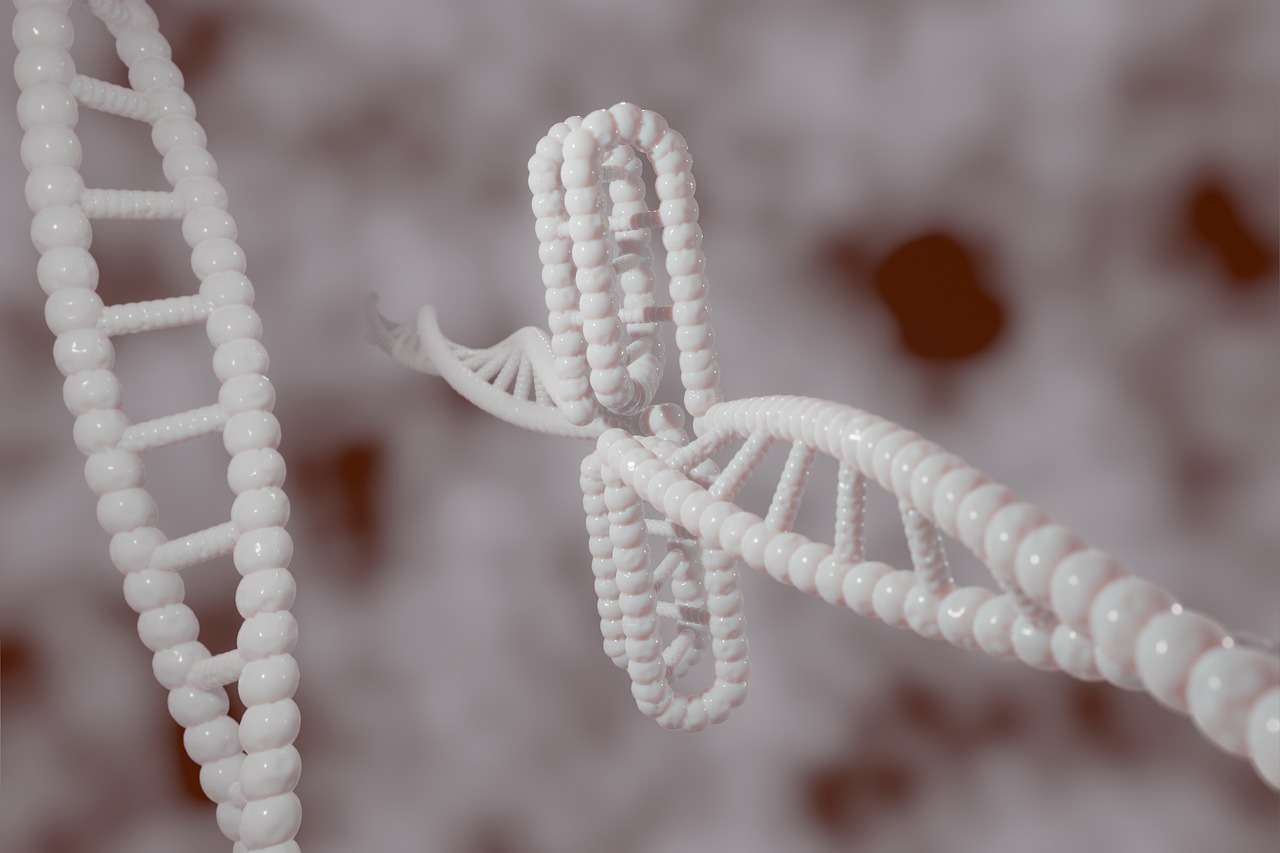
Bioinformatics
In today's rapidly evolving scientific landscape, stands out as a transformative force, bridging the gap between biology and technology. By integrating biology, computer science, and mathematics, bioinformatics enables researchers to analyze vast amounts of genetic data with unprecedented accuracy and efficiency. Imagine trying to find a needle in a haystack—bioinformatics provides the tools to not only locate that needle but also to understand its significance in the broader context of human health and disease.
One of the most exciting aspects of bioinformatics is its role in genomic research. With the advent of technologies such as next-generation sequencing, scientists can now sequence entire genomes in a matter of days, generating terabytes of data that require sophisticated analysis. This is where bioinformatics comes into play, utilizing algorithms and computational models to interpret this data, uncovering insights into genetic variations that may contribute to diseases.
Moreover, bioinformatics is pivotal in the development of personalized medicine. By analyzing genetic profiles, healthcare providers can tailor treatments to individual patients, enhancing the effectiveness of therapies while minimizing adverse effects. For instance, cancer treatments can be customized based on the specific genetic mutations present in a patient's tumor, leading to more effective and targeted therapies.
To illustrate the impact of bioinformatics, consider the following table that highlights its key applications:
| Application | Description |
|---|---|
| Genomic Sequencing | Analyzing DNA sequences to identify genetic disorders and variations. |
| Drug Discovery | Utilizing genetic data to identify potential drug targets and predict drug responses. |
| Clinical Diagnostics | Enhancing the accuracy of disease diagnosis through genetic testing. |
| Population Genetics | Studying genetic variations within populations to understand evolutionary processes. |
As the field of bioinformatics continues to expand, the collaboration between geneticists and data scientists becomes increasingly vital. These collaborative research efforts are essential for harnessing the power of big data in genetics. By working together, these experts can drive innovation, improve health outcomes, and ultimately transform the way we approach healthcare.
In conclusion, bioinformatics is not just a tool; it is a revolution in how we understand and interact with the genetic blueprint of life. As we continue to uncover the complexities of our DNA, the potential for groundbreaking discoveries in medicine and biology is limitless.
- What is bioinformatics? Bioinformatics is an interdisciplinary field that combines biology, computer science, and mathematics to analyze and interpret biological data, particularly genetic information.
- How does bioinformatics contribute to personalized medicine? Bioinformatics allows for the analysis of individual genetic profiles, enabling healthcare providers to tailor treatments based on a patient's unique genetic makeup.
- What are some common applications of bioinformatics? Common applications include genomic sequencing, drug discovery, clinical diagnostics, and population genetics.
- Why is collaboration important in bioinformatics? Collaboration between geneticists and data scientists is crucial for effectively analyzing large datasets and driving innovation in genetic research.

Data Analysis Techniques
In the fast-paced world of genetics, play a pivotal role in transforming raw genetic data into meaningful insights. Imagine trying to find a needle in a haystack; that's what geneticists face when sifting through vast amounts of DNA sequences. Advanced algorithms and computational tools are like the magnet that pulls that needle out, making it easier to identify patterns, anomalies, and potential links to diseases.
One of the most exciting developments in this field is the use of machine learning algorithms. These algorithms can learn from data, improving their accuracy over time. For instance, they can analyze genetic variations associated with specific diseases, allowing researchers to pinpoint which mutations may be responsible for conditions like cancer or diabetes. This process not only accelerates research but also opens the door to personalized medicine, where treatments can be tailored to an individual's genetic makeup.
Another crucial technique is statistical analysis, which helps scientists determine the significance of their findings. By using various statistical methods, researchers can assess whether the genetic variations they observe are likely to be linked to diseases or if they are merely random occurrences. This is essential in establishing a solid foundation for further studies and clinical applications.
Moreover, bioinformatics tools are indispensable in managing and interpreting the enormous datasets generated by genomic sequencing. These tools facilitate the integration of diverse data types, such as genomic, transcriptomic, and proteomic data, enabling a comprehensive view of biological processes. The synergy between biological data and computational analysis is akin to a well-orchestrated symphony, where each instrument plays a vital role in creating a harmonious understanding of genetics.
To illustrate the impact of these techniques, consider the following table, which summarizes some of the key data analysis methods used in genetics:
| Technique | Description | Applications |
|---|---|---|
| Machine Learning | Algorithms that learn from data to identify patterns and make predictions. | Disease prediction, personalized medicine. |
| Statistical Analysis | Methods to assess the significance of genetic findings. | Identifying disease associations, validating research results. |
| Bioinformatics Tools | Software for managing and interpreting large genomic datasets. | Data integration, functional genomics. |
As we delve deeper into the realm of genetics, the importance of these data analysis techniques cannot be overstated. They not only enhance our understanding of complex biological systems but also pave the way for groundbreaking discoveries that can revolutionize healthcare. The collaboration between geneticists and data scientists is like a powerful team in a relay race, where each participant brings their strengths to the finish line of scientific discovery.
- What is the role of data analysis in genetics? Data analysis techniques help researchers interpret complex genetic data, identify patterns, and establish links between genetic variations and diseases.
- How does machine learning contribute to genetic research? Machine learning algorithms analyze vast datasets, improving their predictive capabilities over time, which aids in personalized medicine and disease prediction.
- What are bioinformatics tools? Bioinformatics tools are software applications that manage and analyze biological data, facilitating a comprehensive understanding of genetic information.

Collaborative Research Efforts
In the rapidly evolving landscape of genetics and technology, are becoming the cornerstone of innovation and discovery. Imagine a world where geneticists, bioinformaticians, and data scientists come together like an orchestra, each playing their unique instrument to create a harmonious symphony of knowledge. This collaboration is not just a trend; it’s a necessity in tackling the complexities of genetic data and its implications for human health.
One of the most exciting aspects of these collaborative efforts is the ability to pool resources and expertise. By combining the analytical prowess of bioinformaticians with the deep biological insights of geneticists, researchers can uncover patterns and insights that would be impossible to achieve in isolation. For instance, consider a project aimed at understanding a complex genetic disorder. A geneticist might identify potential genetic markers, while a bioinformatician analyzes vast datasets to find correlations and trends. Together, they can create a comprehensive picture that informs treatment strategies and preventive measures.
Moreover, these collaborations often extend beyond individual institutions. Global partnerships are becoming increasingly common, allowing researchers from different countries to share data, methodologies, and findings. This not only accelerates the pace of discovery but also enhances the diversity of perspectives, which is crucial for tackling multifaceted challenges in genetics. Think of it as a global think tank, where ideas flow freely and innovation knows no borders.
To illustrate the impact of collaborative research, let’s take a look at a few notable projects:
| Project Name | Focus Area | Outcome |
|---|---|---|
| 100,000 Genomes Project | Rare diseases and cancer | Identified genetic mutations linked to various conditions |
| Human Genome Project | Mapping the entire human genome | Laid the foundation for modern genomics |
| Global Alliance for Genomics and Health | Genomic data sharing | Established standards for data sharing and privacy |
As we delve deeper into the era of big data, the need for advanced data analysis techniques becomes evident. Collaborative research efforts often involve the use of machine learning and artificial intelligence to sift through massive datasets, identifying genetic markers and potential therapeutic targets. This synergy between disciplines not only enhances the efficiency of research but also opens up new avenues for exploration. It’s like having a supercharged engine that propels scientific discovery forward at breakneck speed.
However, collaboration is not without its challenges. Different fields often have their own terminologies, methodologies, and ethical considerations. Bridging these gaps requires effective communication and a shared vision. Researchers must be willing to step outside their comfort zones and embrace interdisciplinary approaches. But the rewards are immense: accelerated discoveries, innovative treatments, and a deeper understanding of genetics that can transform healthcare.
In conclusion, the future of genetics is bright, thanks in large part to collaborative research efforts. By harnessing the strengths of diverse expertise and fostering a culture of teamwork, we can unlock the mysteries of our genes and pave the way for breakthroughs that were once thought to be the stuff of science fiction. So, let’s continue to champion these collaborations, because together, we can achieve what we could never accomplish alone.
- What is the importance of collaborative research in genetics?
Collaborative research allows for the pooling of expertise and resources, leading to faster and more comprehensive discoveries in the field of genetics. - How do data scientists contribute to genetic research?
Data scientists use advanced analytics and machine learning techniques to interpret large datasets, helping to identify patterns and potential treatment targets. - What are some challenges faced in collaborative research?
Challenges include differences in terminology, methodologies, and ethical considerations, which require effective communication and a shared vision among researchers.
Frequently Asked Questions
- What is genomic sequencing and why is it important?
Genomic sequencing is the process of determining the complete DNA sequence of an organism's genome. It's important because it allows us to identify genetic disorders, understand heredity, and develop personalized medicine tailored to individual needs. Imagine having a map of your genetic makeup, helping doctors navigate your health more effectively!
- How does CRISPR technology work?
CRISPR technology works like a molecular scissors, allowing scientists to cut and edit specific sections of DNA. This precision offers potential cures for genetic diseases by correcting mutations. Think of it as editing a sentence in a book to make it read correctly, which opens up a world of possibilities for medical advancements!
- What are the medical applications of CRISPR?
CRISPR has shown promise in treating conditions such as sickle cell anemia and muscular dystrophy. By targeting and modifying the genes responsible for these diseases, researchers hope to provide lasting solutions. It's like finding a key that unlocks a door to better health!
- What ethical concerns are associated with gene editing?
As CRISPR technology evolves, ethical concerns arise, particularly regarding designer babies and the unintended consequences of altering human DNA. These questions challenge us to think about the moral implications of our scientific capabilities, ensuring we tread carefully in this brave new world.
- How is genetic testing beneficial?
Genetic testing is crucial for early detection of hereditary conditions, allowing individuals to understand their genetic risks and make informed health decisions. It's like having a crystal ball that reveals potential health issues before they become serious, empowering people to take proactive steps.
- What role does bioinformatics play in genetics?
Bioinformatics combines biology, computer science, and mathematics to analyze genetic data, facilitating advancements in genomics. It helps researchers interpret vast amounts of information, leading to breakthroughs in understanding diseases and developing treatment strategies. Think of it as the brain behind the data, making sense of the complexities of life!
- How do collaborative research efforts enhance genetic research?
Collaborative research efforts between geneticists and data scientists are essential for harnessing big data's power in genetics. By working together, they drive innovation and improve health outcomes, much like a team of diverse superheroes joining forces to tackle a common challenge!

